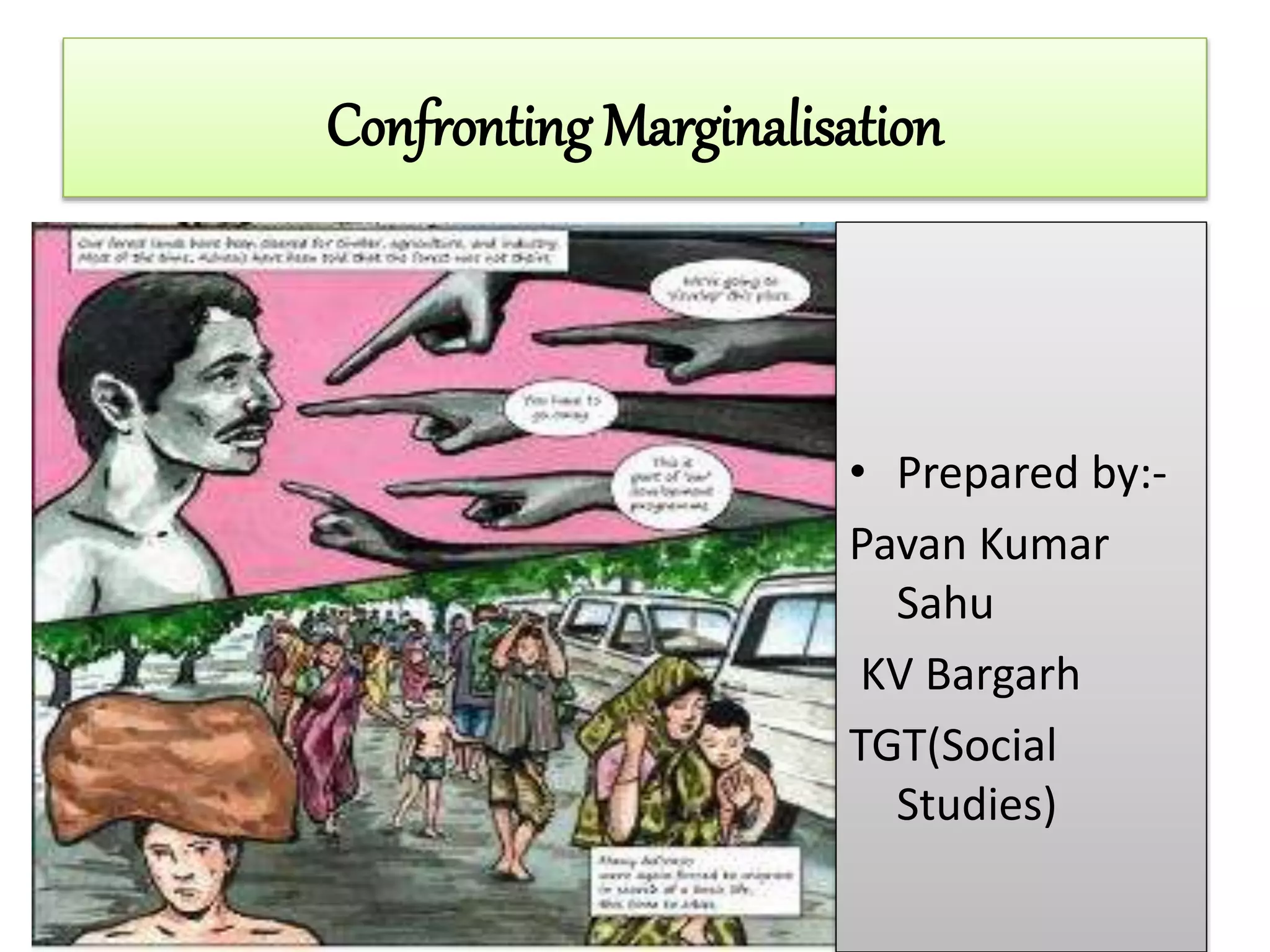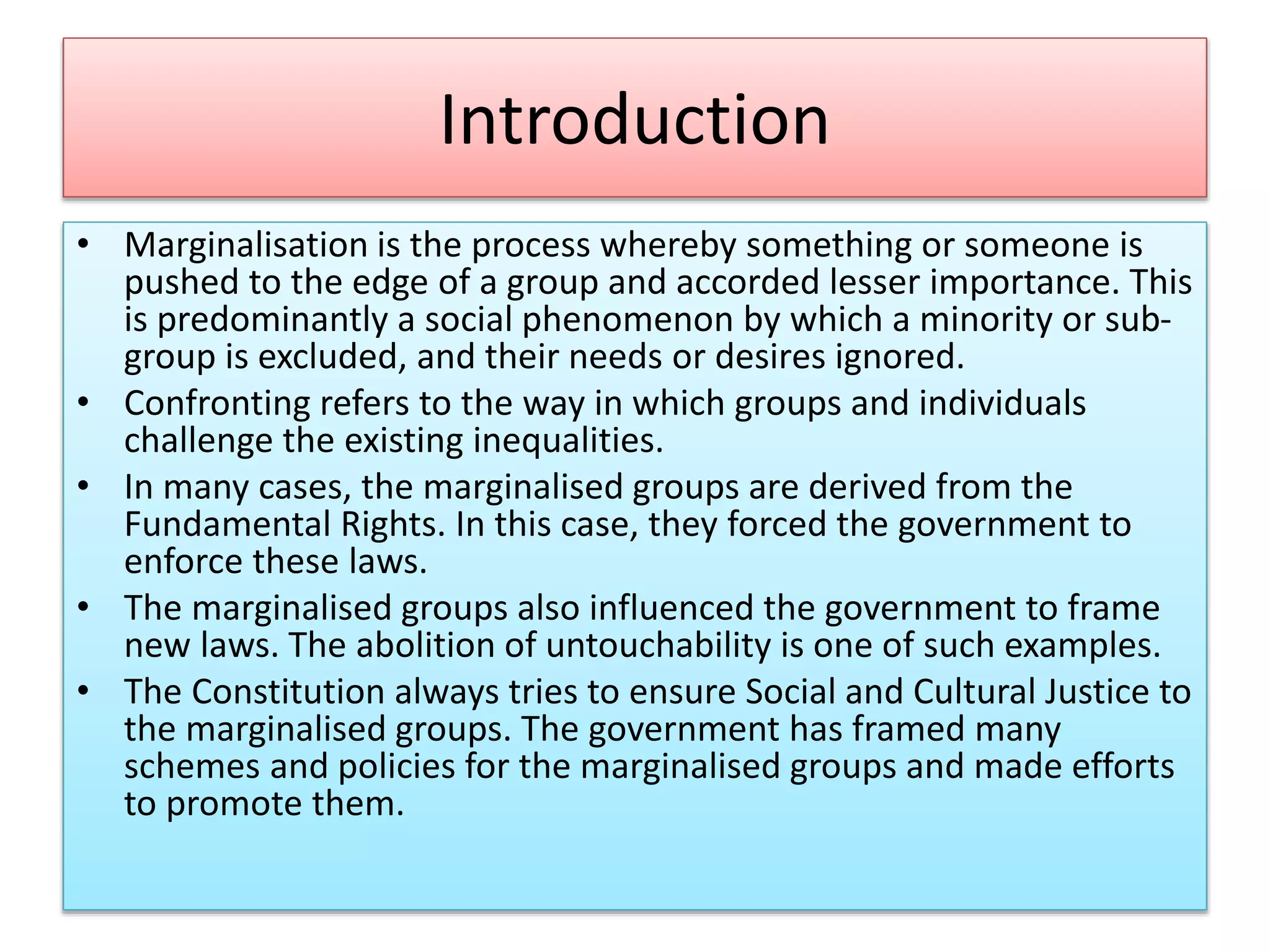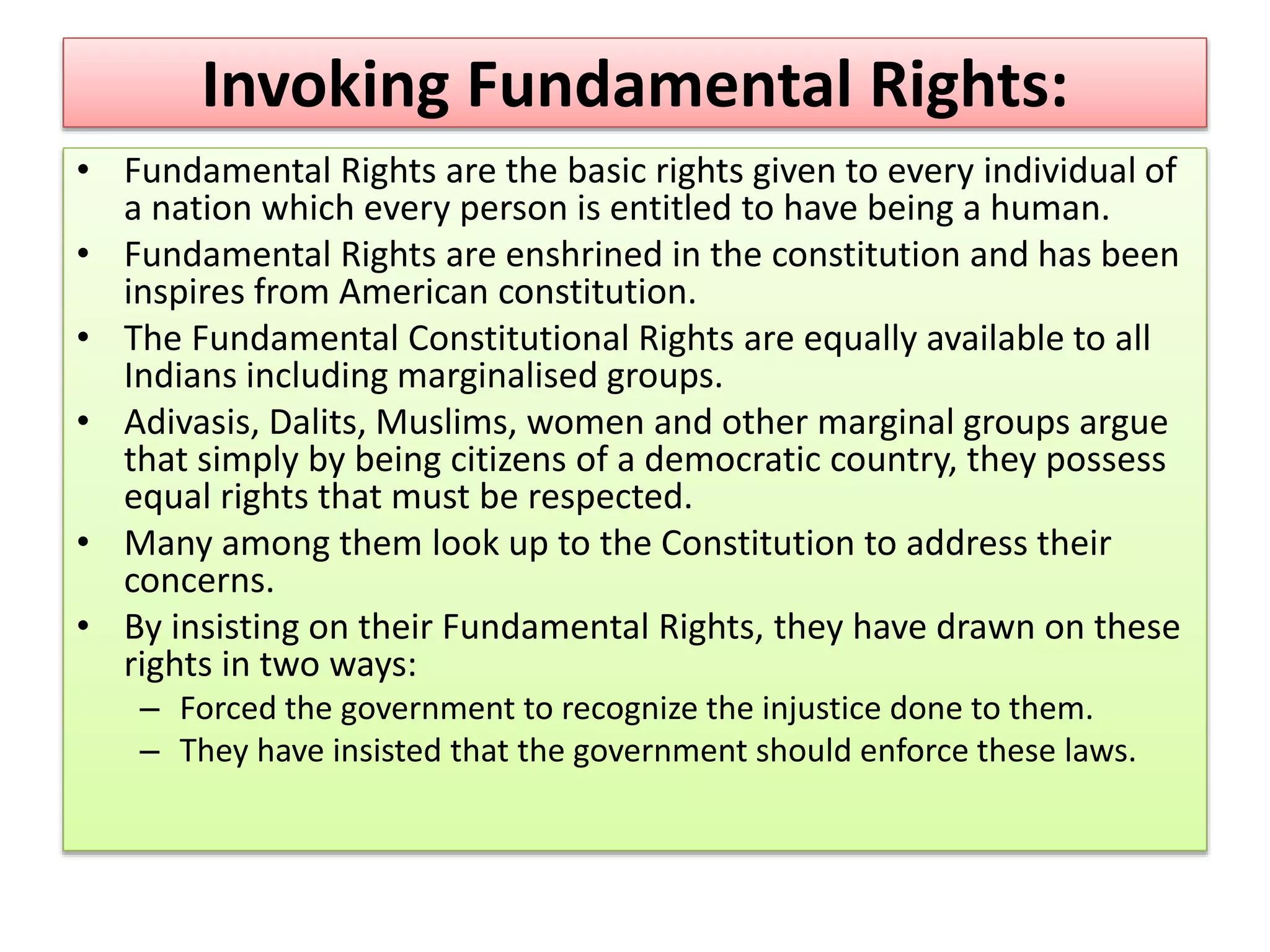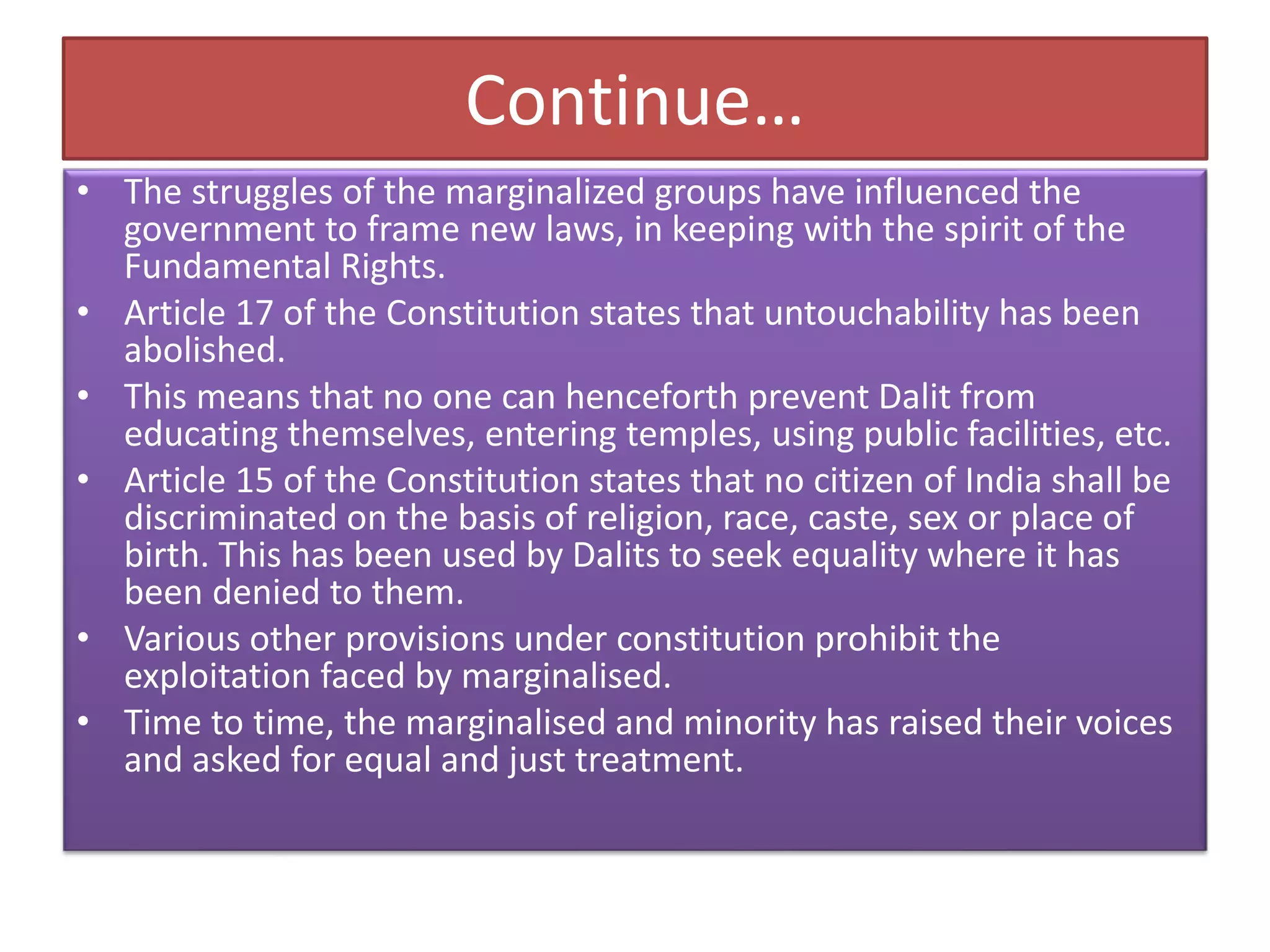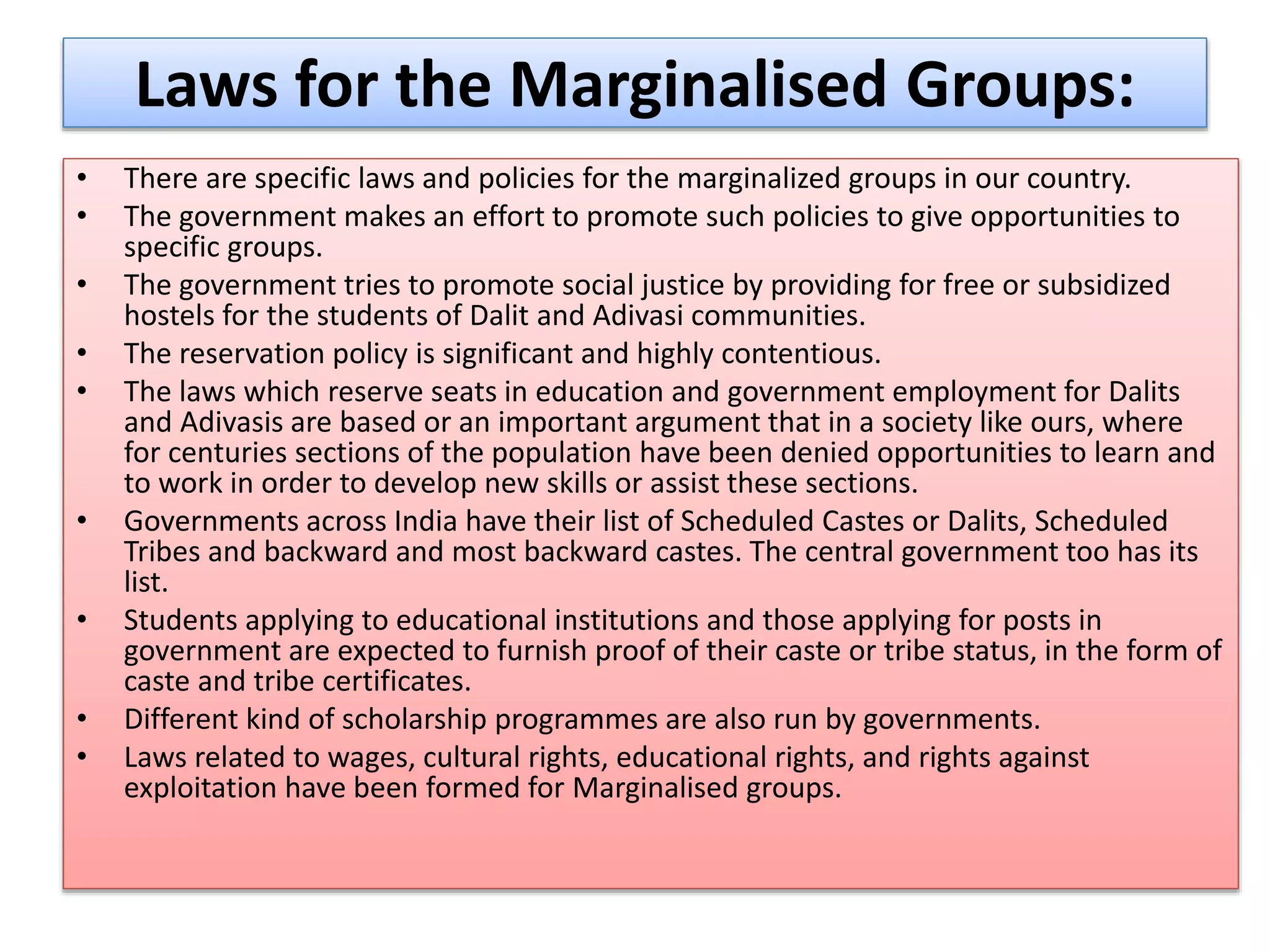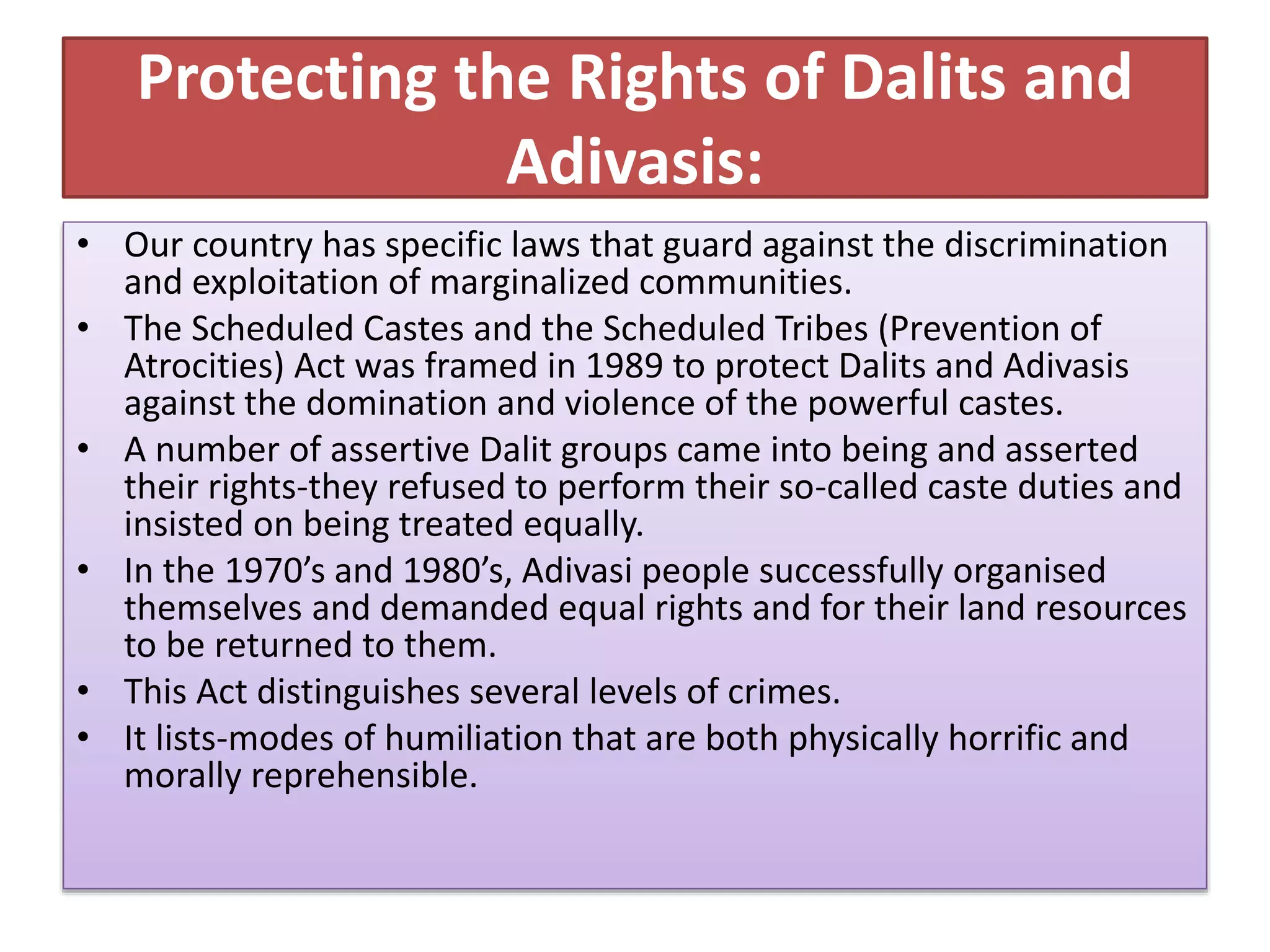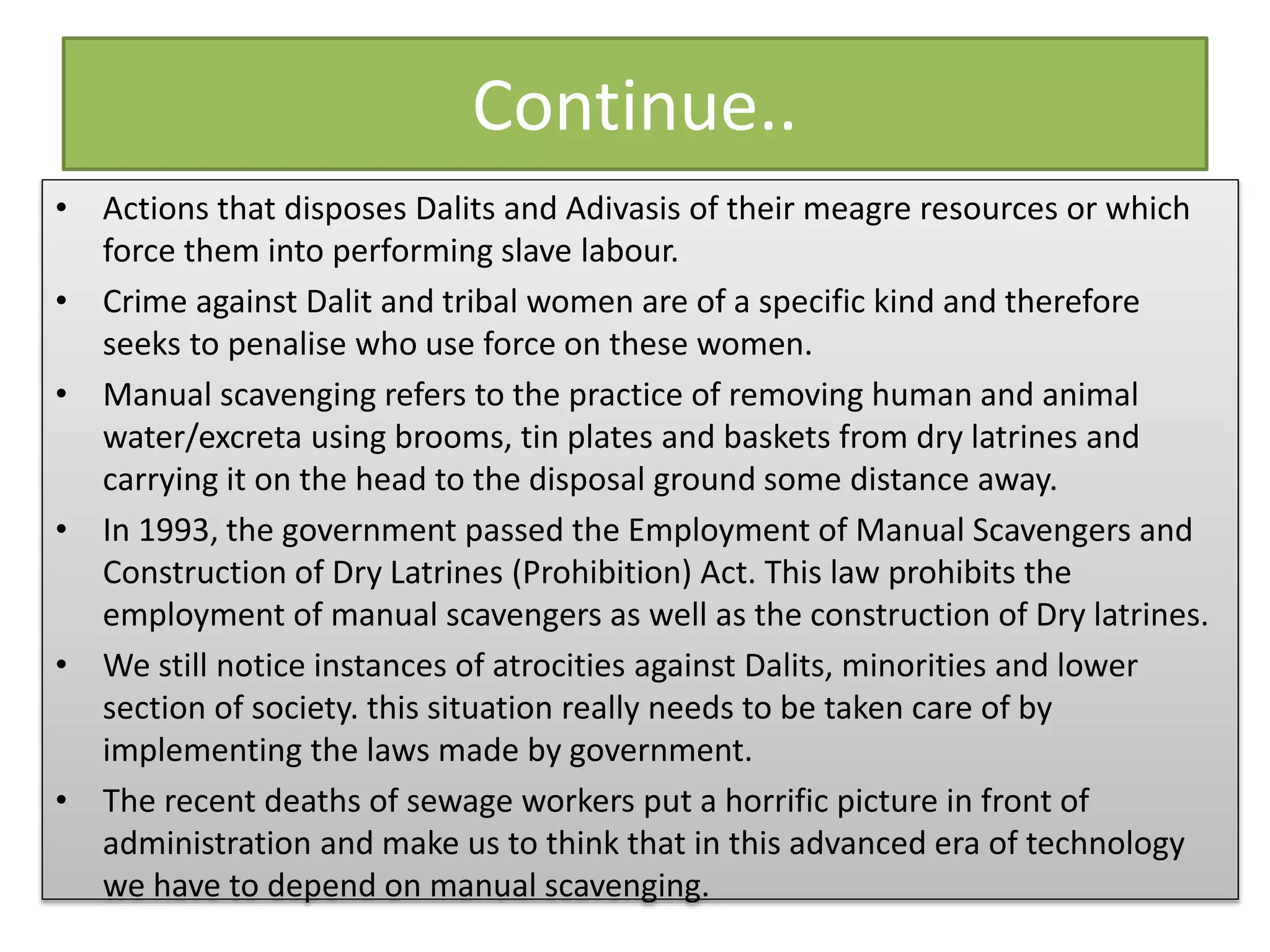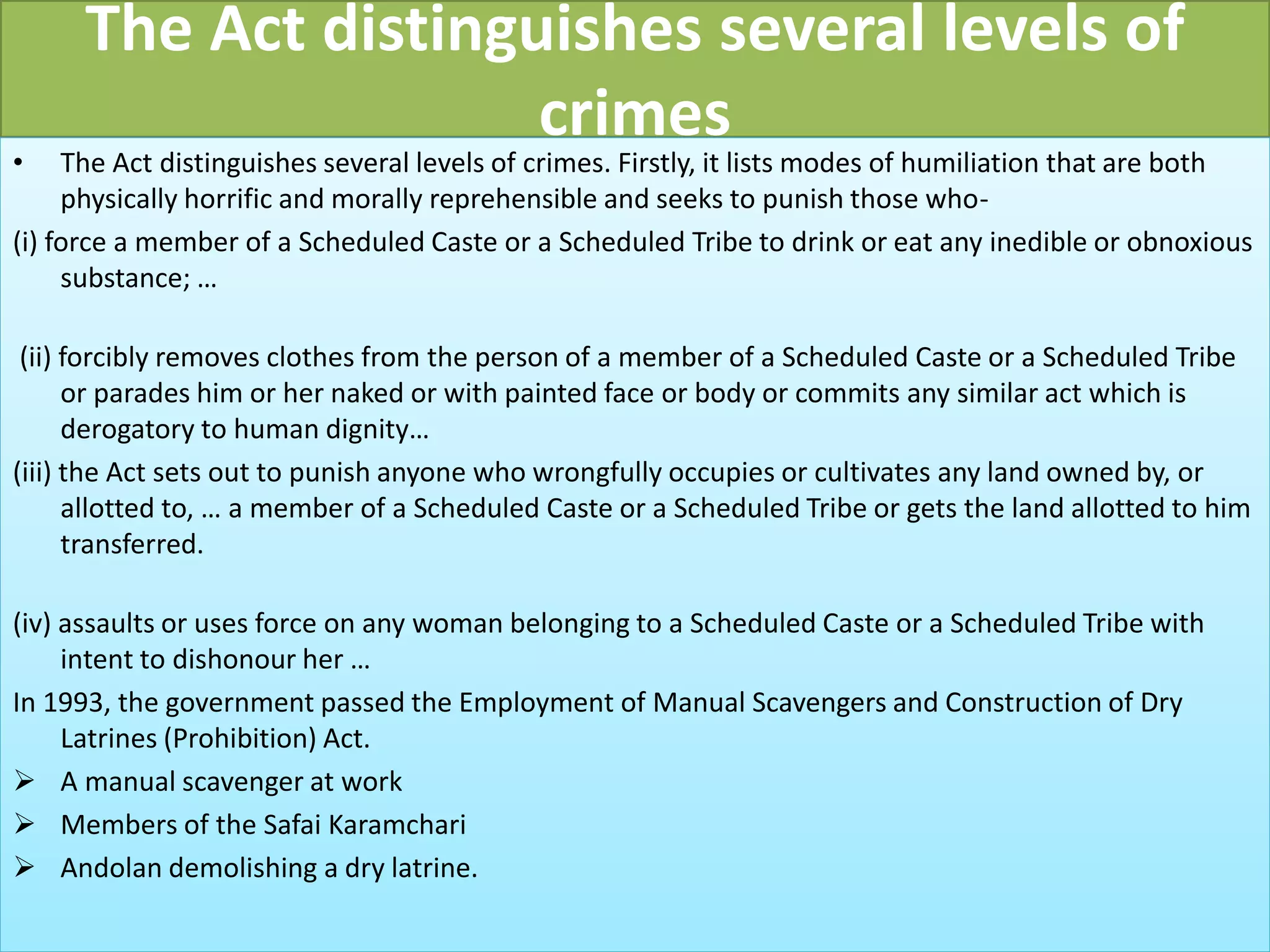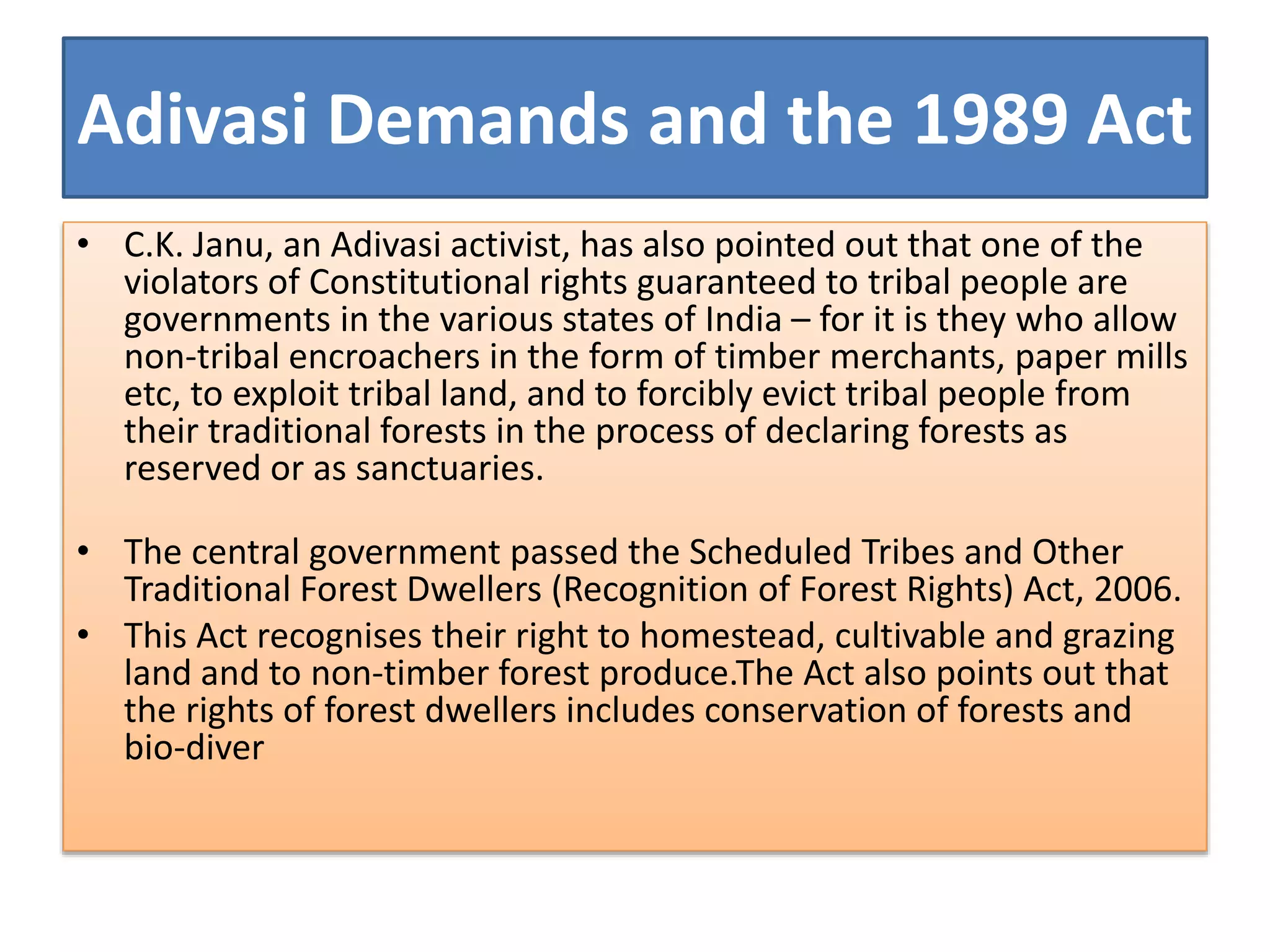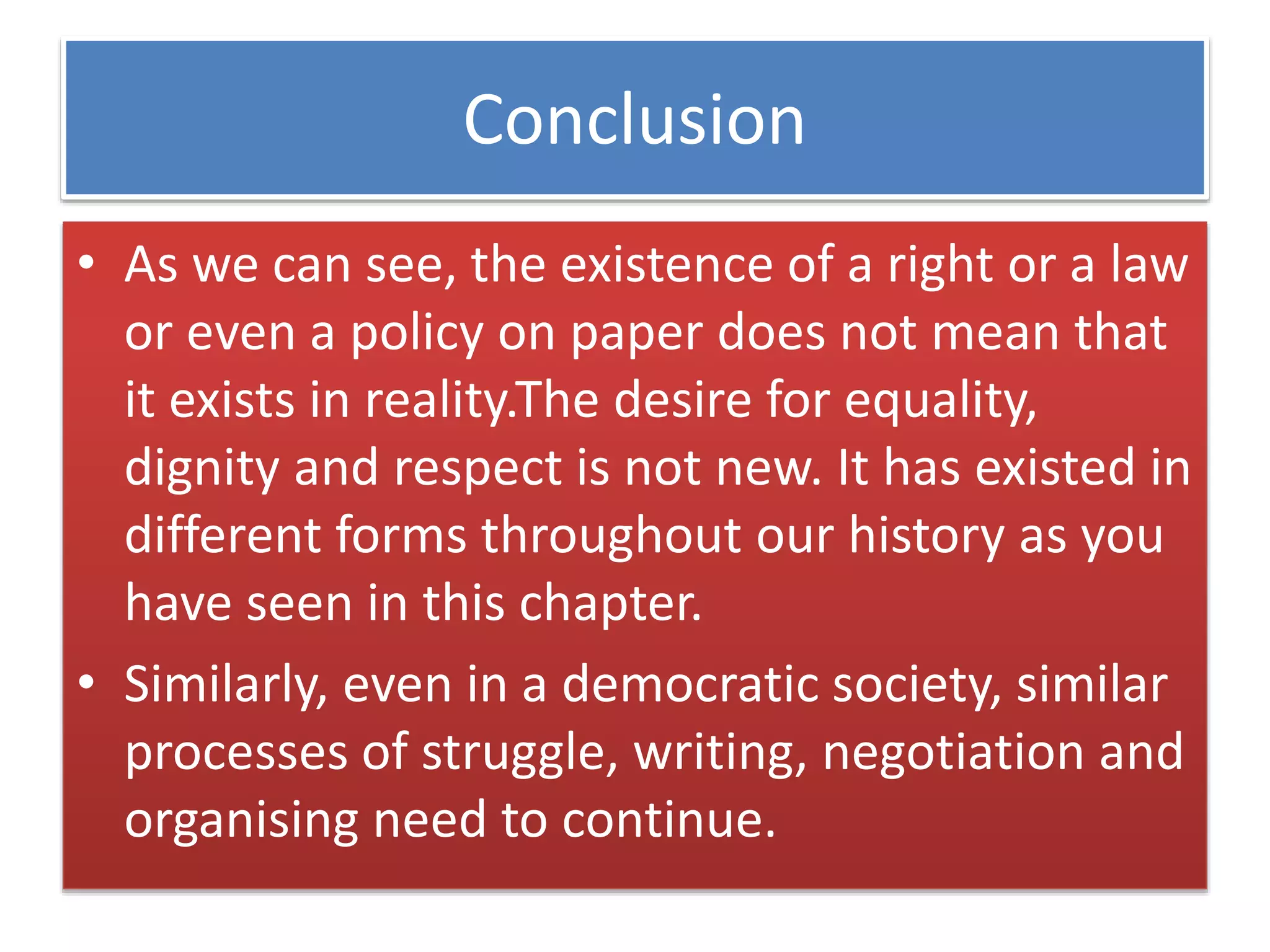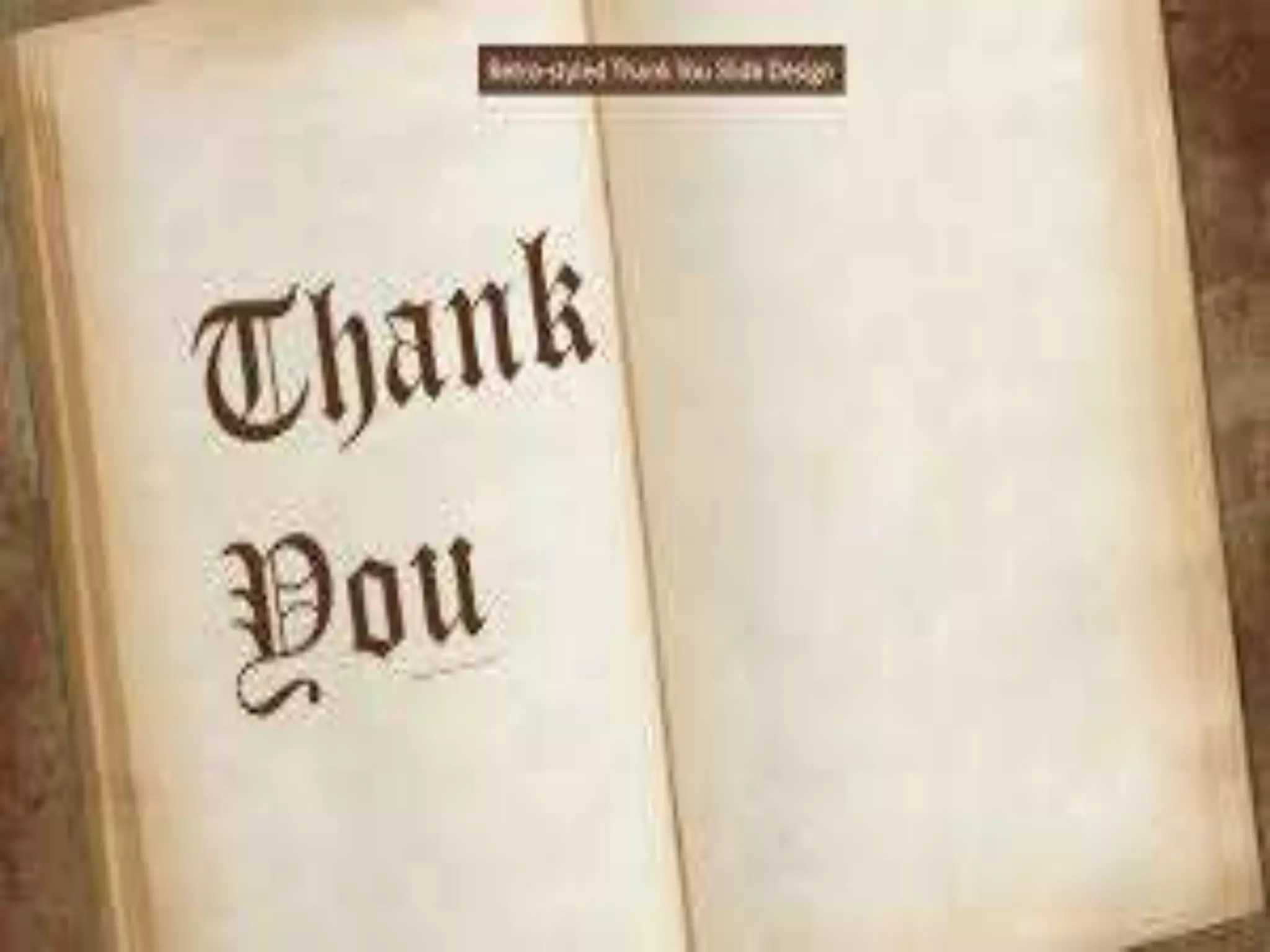The Scheduled Castes and Scheduled Tribes (Prevention of Atrocities) Act, 1989 was framed to protect Dalits and Adivasis from discrimination and violence. It distinguishes different types of crimes like humiliation, depriving access to resources, and assault. It also prohibits practices like manual scavenging. Adivasis successfully organized and demanded land rights, leading to the 2006 Forest Rights Act recognizing their rights over forest areas. While laws exist to protect marginalized groups, ongoing struggle is needed to ensure equality in reality.
